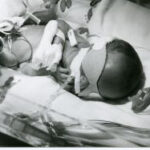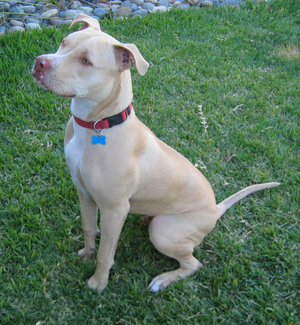Bringing home a new baby from the hospital can be one of the best and scariest days of your entire life. I’ve done it twice myself and each time, believe it or not, the doctor DID NOT give me an instruction manual on babies. Presumably, since mothers are human beings themselves, they are innately born with every piece of knowledge necessary to raise a child from infancy to adulthood. Don’t believe the hype! I had never been around tiny babies before and when my own were born, they might as well have been creatures from another planet in as much as I knew how to take care of them. All the books like, What To Expect When Your Expecting,never really touch on what actually HAPPENS when baby gets home. Once you get through the first few nights, weeks and months with your new miracle, unavoidably, the first fever will eventually rear it’s ugly head. Now if you’re a first time parent, you will understandably have some difficulty determining if, in fact, your child does actually have a fever. Below you’ll find four ways to take your child’s temperature and then finally, what medications can remedy the fever and when to call the pediatrician.
Oral thermometer
The oral thermometer you remember from childhood is a different version than the one we have today. The old ones had mercury in them and were actually very dangerous to be used on children. The ones today are much safer, barely need to go under the tongue and get a reading in under a minute. Using an oral thermometer on a new baby, however, is futile. A new baby will neither lie still long enough for you to check their temperature and you’re probably gonna start a serious bout of crying if you keep forcing the thermometer into their little mouth. Don’t go this route until your child is around the age of 4 or 5.
Forehead thermometer
The stick on or lay on forehead thermometer is not a good way to take your baby’s temperature either. It can be quite inaccurate and when you need to make the decision of whether or not to take your child to the emergency room at midnight, knowing the EXACT temperature is crucial. You don’t want to bundle up your baby, wake up your entire family and make an unnecessary trip to a hospital if your child’s fever isn’t even relatively that high. Don’t even try forehead thermometers. Trust me.
Under Arm thermometer
The under arm thermometer is a fairly easy and accurate way to take your baby’s temperature but always remember to add a degree. For instance, if you take the temperature and it reads 99.9 then your child’s temp is actually 100.9. Always try to place the thermometer under the left arm, as it’s closer to the heart and try to place the tip in the direct center of the arm pit.
Rectal thermometer
Many parents are slightly apprehensive of using a rectal thermometer on their newborn baby strictly because of where it goes. This thermometer, however, is the most accurate of them all. When you take your child’s temp rectally, you get an exact reading of their internal body temperature. You’ll need to lay the baby on their side or tummy, use a dab of petroleum jelly on the tip of the thermometer and just barely insert. Keep the baby still and free from movement until the thermometer gets the reading.
So, let’s talk about what reading actually constitutes a temperature. The status quo is that 98.6 is normal but in actuality, each human being on the planet has a different “normal”. The normal range for most people is 98.6-100.4. If your child’s temperature is over 100.4 then they definitely have a fever. For children under 3 months of age, any time they have a temperature over 100.4, they need to be seen by a doctor. In children over 3 months of age the temperature to be concerned about is over 102.4. Always have acetaminophen and ibuprofen on hand. Most doctors will tell you that the best course for bringing down a fever is to use both medicines, intermittently. It’s also wise to not over dress a baby because sometimes they can have symptoms of a fever by just being over dressed, as in winter. Do not put a child in a cold bath to bring down a fever. If the child sits in water cold enough to bring chill bumps to the surface of their skin, then their body is going to shiver to try to heat itself back up. Instead, put the child in a luke warm bath and gently continue to pour water over the child’s back and torso, where most of the fever can be felt. Once the child is able to sleep for the night, have them dress very lightly and use just a sheet if necessary. If a fever persists for more than 2 days and if other symptoms manifest, you’ll need call your pediatrician and go in, just to make sure there aren’t any bacterial infections present.
After you and your baby survive your first few fevers, you’ll both become comfortable in how to handle them.





